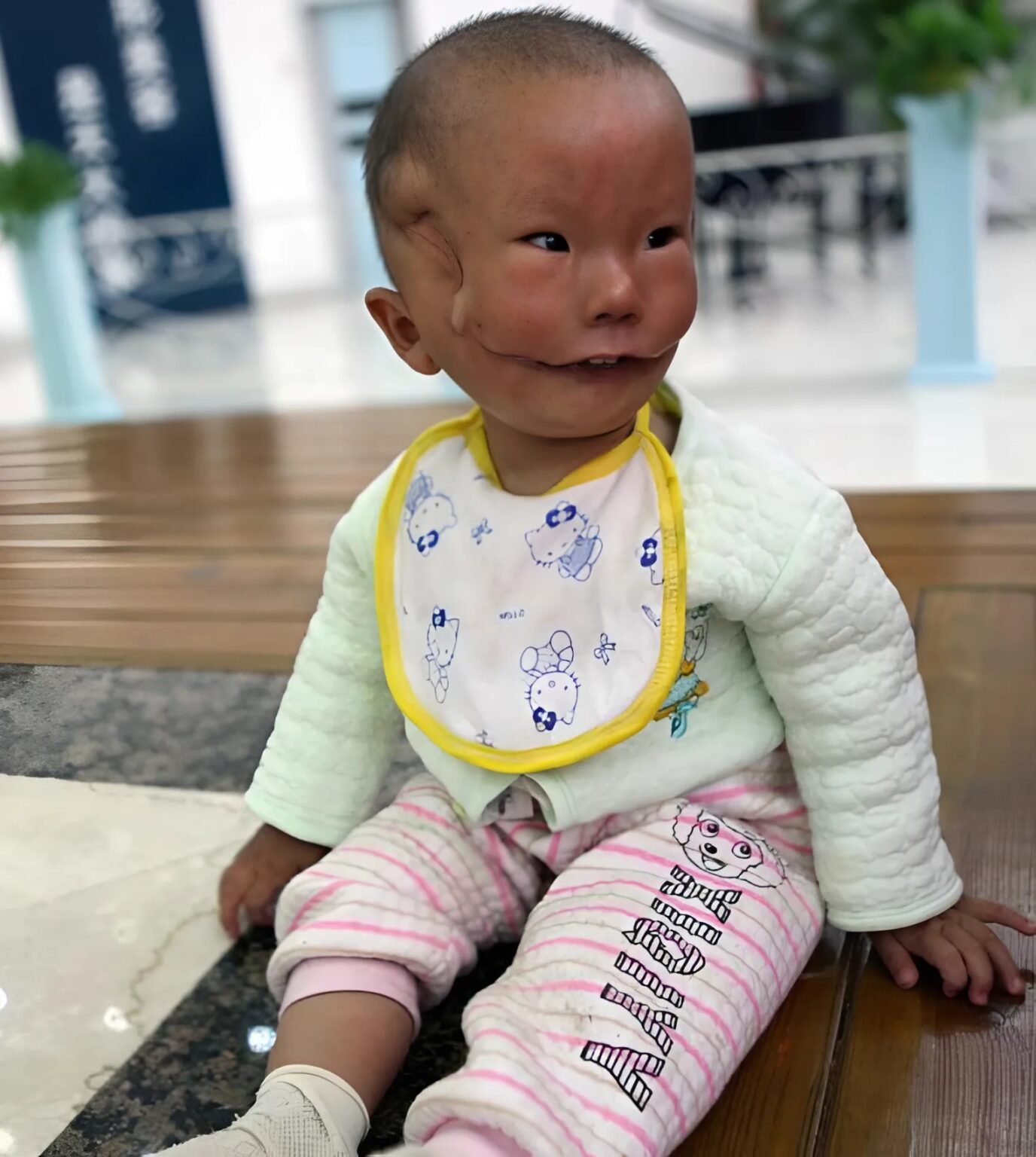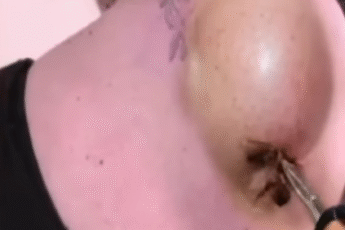
In 2009, in a quiet village nestled in China’s Hunan Province, a young woman named Ilyeon Xie faced a moment that would change her life forever. She had just given birth to her first child—a boy she named Hu Kang. Like any new mother, she was overwhelmed with joy, eager to see her baby’s tiny face, hold him close, and begin their journey together. The hospital team brought her the newborn shortly after delivery, and in her heart, she hoped to see a healthy, perfect little boy wrapped in a blanket of love.
But what she discovered was something she could never forget—something that would haunt her for years to come. When the nurses carefully presented Hu Kang to her, her heart sank into an abyss of shock and fear. The boy’s face looked utterly different from what she had expected. His features were divided by deep, unnatural splits that ran from the corners of his mouth to his ears—a bilateral transverse facial cleft. It wasn’t just a minor deformity; it was a severe condition. During fetal development, the front part of his skull had failed to fuse properly, resulting in two distinct halves of his face that looked almost mask-like, frightening in its symmetry yet horrifying in its deviation from natural beauty.

In that instant, Ilyeon was paralyzed with fear. She was overwhelmed, her mind racing with a thousand thoughts—questions, fears, and heartbreak. How could her tiny baby be so different? Would he ever be able to smile, speak, or lead a normal life? She looked at him with tears in her eyes, clutching him close as her world seemed to shatter in silence. Her cries of despair echoed in her mind, yet she also felt a fierce wave of love deep inside—her instincts to protect and care for her child fighting against the heartache.
The family’s situation was heartbreaking. The doctors explained that treatment was possible, but it would be tremendously expensive—a hurdle that seemed insurmountable for a family living in a small village. Their limited resources felt like an impossible barrier, and as the days passed, their despair only grew. In 2010, overwhelmed with love and hope, Ilyeon made a decision that would set her on a journey of courage and resilience. She shared her son’s story with journalists, hoping to find help beyond her small community. The heartfelt photos of Hu Kang—his deep clefts, his tiny face filled with innocence—began circulating across China and then abroad.
People were moved by the family’s plight. Donations flooded in from across the country and eventually from overseas, driven by compassion for this mother and her remarkable son. Thanks to these collective efforts, Hu Kang was able to undergo two highly complex surgeries. The first surgeries aimed to reconstruct the symmetry of his face, to restore as much normalcy as possible. Although the initial results were far from perfect, the doctors assured the family that significant improvements could be seen within about ten years.
And they were right. Over the next several years, Hu Kang’s transformation was inspiring. The photographs taken in later years showed a new boy—a smiling student with bright eyes, full of hope. The deep scars from surgeries gradually faded, leaving only faint marks that hinted at the incredible journey he had endured. The once-distinct clefts had disappeared, replaced by a face that radiated joy and resilience. Though he still bore the faint traces of his past, his smile told the story of a life rebuilt—one filled with hope, love, and the strength of a mother’s unwavering faith in her child.
Looking at those pictures now, it’s impossible not to feel moved. Hu Kang’s story is a testament to the power of community, determination, and love. It underscores that even in the bleakest moments, hope can blossom into something beautiful—if only someone dares to reach out and believe. And for Hu Kang and his family, years of pain and uncertainty turned into a story of triumph. It’s a reminder that with enough courage, compassion, and collective effort, life can be transformed in ways no one thought possible.








